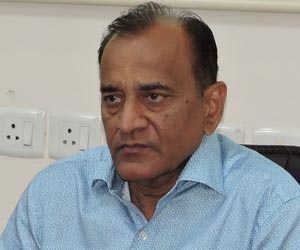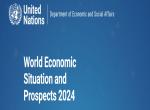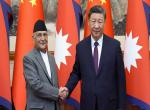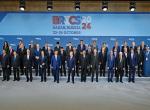Those who had been wondering whether the Modi Government would bite the bullet on Article 370 and Article 35A got their answer on August 5. Not only did the government scrap the two provisions, the first of which was of a temporary nature and the second one that had come through the backdoor, but it also went two steps further. It bifurcated Jammu & Kashmir, and turned the two new entities into separate Union Territories. Thus, Jammu & Kashmir will now be a Union Territory with a Legislative Assembly, while Ladakh will be a Union Territory without an Assembly. Since the two provisions related exclusively to Jammu & Kashmir, dire warnings of a law and order calamity and even possible secession of Kashmir from the Indian Union have been issued by leaders of the State’s two major regional outfits, the National Conference and the Peoples Democratic Party (PDP), in case the Centre tampered with the provisions. To counter this lobby, there were those who pointed out that the two Articles had actually been exploited by vested elements to keep the Kashmir pot boiling and create obstacles in the full integration of the state with the rest of India.
Given the sensitivity of the case, no government or mainstream political party over the decades had dared to question the continuation of the two Articles, one of which came through a Presidential Order and the other which was designated as a temporary and transitory provision. Given this background, not many had expected the BJP-led Government to take the bull by the horns. This, despite the fact that the BJP had stated its resolve in its election manifesto, “We reiterate our position to the abrogation of Article 370. We are committed to annulling Article 35A of the Constitution of India as the provision is discriminatory against non-permanent residents and women of Jammu & Kashmir. We believe that Article 35A is an obstacle to the development of the State.” Union Minister for Home Affairs Amit Shah’s declaration in Parliament on August 5 is, thus, a fulfilment of a promise that until now was limited to paper.
Article 35A was not even part of the Constitution that was debated in the Constituent Assembly and later adopted with some amendments. It was incorporated in the Constitution in 1954 by an order of the then President Rajendra Prasad on the advice of the Jawaharlal Nehru Cabinet. Nehru persuaded his ministerial colleagues to stamp their approval after he reached an understanding with Sheikh Abdullah, through what came to called the Delhi Agreement of 1952, to extend Indian citizenship to the ‘state subjects’ of Jammu & Kashmir. Sheikh Abdullah's influence over Nehru was such that the government took the unprecedented step of resorting to a Presidential Order in order to appease the Kashmir leader.
With the parliamentary route bypassed, Article 35A was neither debated in nor passed by Parliament. And yet, the Constitution was effectively amended with the introduction of this provision. Article 368 is clear that only Parliament can amend the Constitution through the introduction of an amendment Bill. Clause (2) reads as follows: “An amendment of this Constitution may be initiated only by the introduction of a Bill for the purpose in either House of Parliament, and when the Bill is passed in each House by a majority… it shall be presented to the President…” Once the President gives his assent, the Bill becomes an Act. In the case of Article 35A, the entire process was short-circuited, and the Presidential Order— officially called the Constitution (Application to Jammu & Kashmir) Order of 1954 — was issued.
An order of a five-judge Supreme Court Bench in 1961 left the issue of whether a law not passed by Parliament is unconstitutional, dangling in the air. Hearing the case of Puranlal Lakhanpal versus President of India, while the court observed that the President can modify an existing provision in the Constitution, it was silent on whether the President has the powers to, without Parliament’s knowledge and approval, introduce a new provision in the Constitution. In any case, the issue of Article 35A has once more reached the court, with a petitioner challenging the Act on its failure to provide gender equality. In fact, there have been two other petitions on the subject — one which questions the provision on the ground that it has created two classes of citizens, which went against the basic structure of the Constitution of India; and another, by a group of West Pakistan refugees who claim that the Article has violated their human rights as it did not give them the right to own property or vote in Jammu & Kashmir.
Incidentally, the Presidential Order of 1954 was made under Article 370 (1)(d) of the Constitution, and President Rajendra Prasad was not fully convinced about the propriety of issuing the order. He had recorded his opinion in the following words: “…Clause (3) of Article 370 was not intended to be used from time to time as occasion required. Nor was it intended to be used without any limit as to time. The correct view appears to be that recourse is to be had to this clause only when the Constituent Assembly of the State has been fully framed.” But he gave in to Nehru’s request.
Article 370 was in itself contentious and the Modi Government had been working to find ways to repeal it. Therein lay the second cause of conflict between the Government (and the BJP) and the opposition parties, particularly the National Conference and the PDP. There was a line of argument that Article 370, in itself a temporary provision, was never designed by the framers of the Constitution to spawn other Articles — and definitely not those that were inserted into the Constitution through the backdoor. The ‘temporary’ nature of the provision is today the subject of a heated debate.
There cannot be a denial of the fact that Article 370 formed Part XXI of the Constitution, which is titled, “Temporary, Transitional and Special Provisions”. The words ‘and special’ were added by the Constitution (13th Amendment) Act, 1962. The Article dealt with a slew of specific provisions for Jammu & Kashmir, thus giving the state a special status. For instance, the President had to get the concurrence of the state legislature on certain matters before he could issue an order. Also, while the President could declare through a public notification that Article 370 ceased to exist, he could do so only after the concurrence of the Constituent Assembly of the State. But this clarity, with the passage of time and with various events having taken place since then, is of no use in the present context. There is no Constituent Assembly in Jammu & Kashmir today and, therefore, the matter came to Parliament for approval on August 5.
For all its temporariness, Article 370 played a role in not just in giving rise to Article 35A but also amending the Constitution of Jammu & Kashmir and in the issuance of various orders. For instance, orders were issued to debar the State Legislature from amending the State Constitution with respect to matters concerning the Governor, the Election Commission and the composition of the Legislative Council. A Supreme Court ruling in 1968 did not help matters; it said that Article 370 could be used to issue such orders despite the fact that the State’s Constituent Assembly had ceased to exist. Indeed, the State’s Constituent Assembly was still at work when the Presidential Order came.
Those who hold on to the belief that Article 370 was a potent force to keep Jammu & Kashmir united with the rest of India, ought to consider the observations of prominent political leaders barely a decade after the Act came into force. Even back then, in 1963, Nehru had told the Lok Sabha that the Act had “been eroded”. He added, “There is no doubt that Kashmir is fully integrated… We feel that this process of gradual erosion of Article 370 is going on. Some fresh steps are being taken and in the next month or two they will be completed. We should allow it to go on.” The implication of his remark was clear: That the Article was on its way to outliving its purpose. Another prominent leader, Gulzari Lal Nanda, said that Article 370 existed only in name. “What happens is that only the shell is there. Article 370, whether you keep it or not, has been completely emptied of its contents. Nothing has been left in it.” Now, the shell that had nothing in it, has been cast aside.
Sheikh Abdullah played a leading role in the birth of Article 370, just as he was to do so later in the case of Article 35A. The contents had been discussed for several months (from May to October 1949) by Prime Minister Nehru and his colleagues, with Sheikh Abdullah, who was then Prime Minister of Jammu & Kashmir, and his people. While Nehru may have sincerely believed that Article 370 would integrate Jammu & Kashmir, in letter and spirit, with the Indian Union, Sheikh Abdullah seemed to have had different ideas. For him, Article 370 was a tool to expand his hegemony in the State and arm-twist the government of India. His future actions, for which he was arrested twice, are a testimony to the dubious strategy he had adopted.











Post new comment